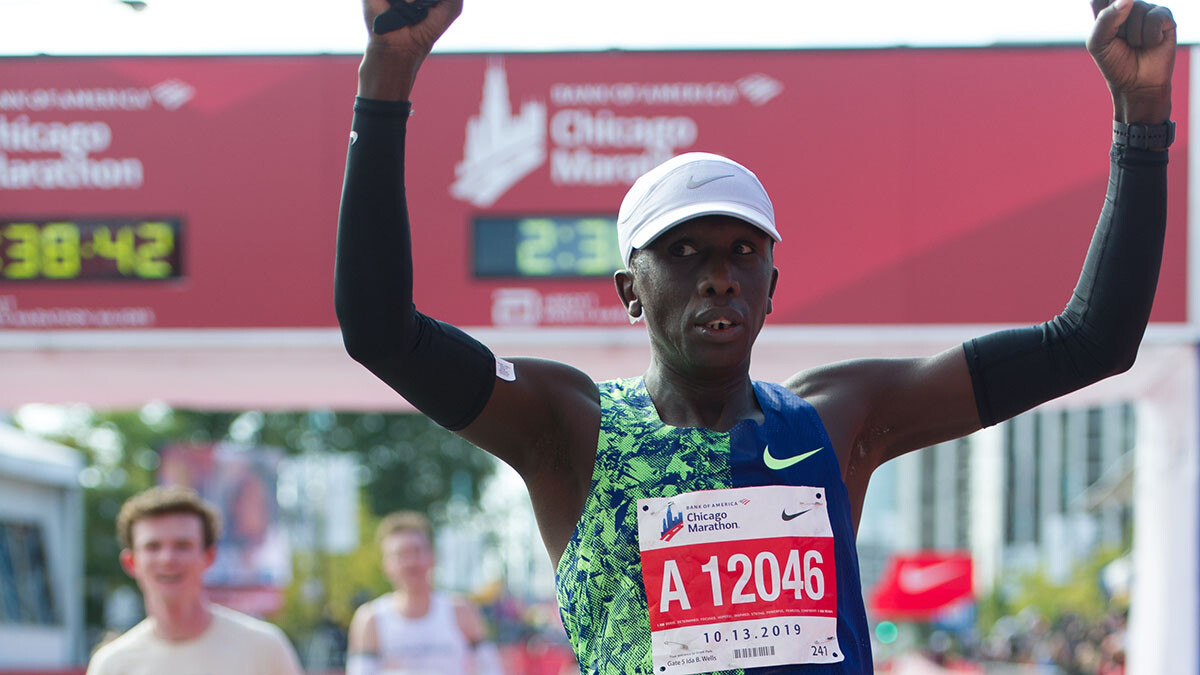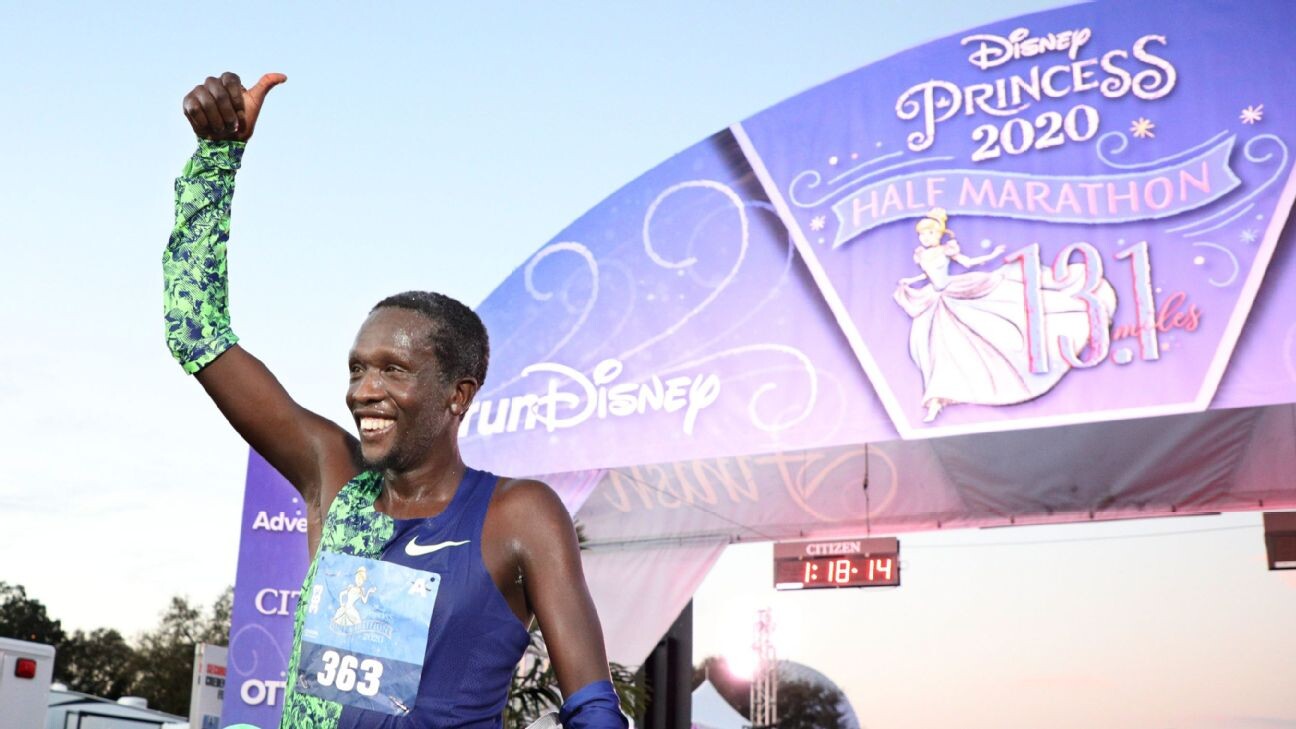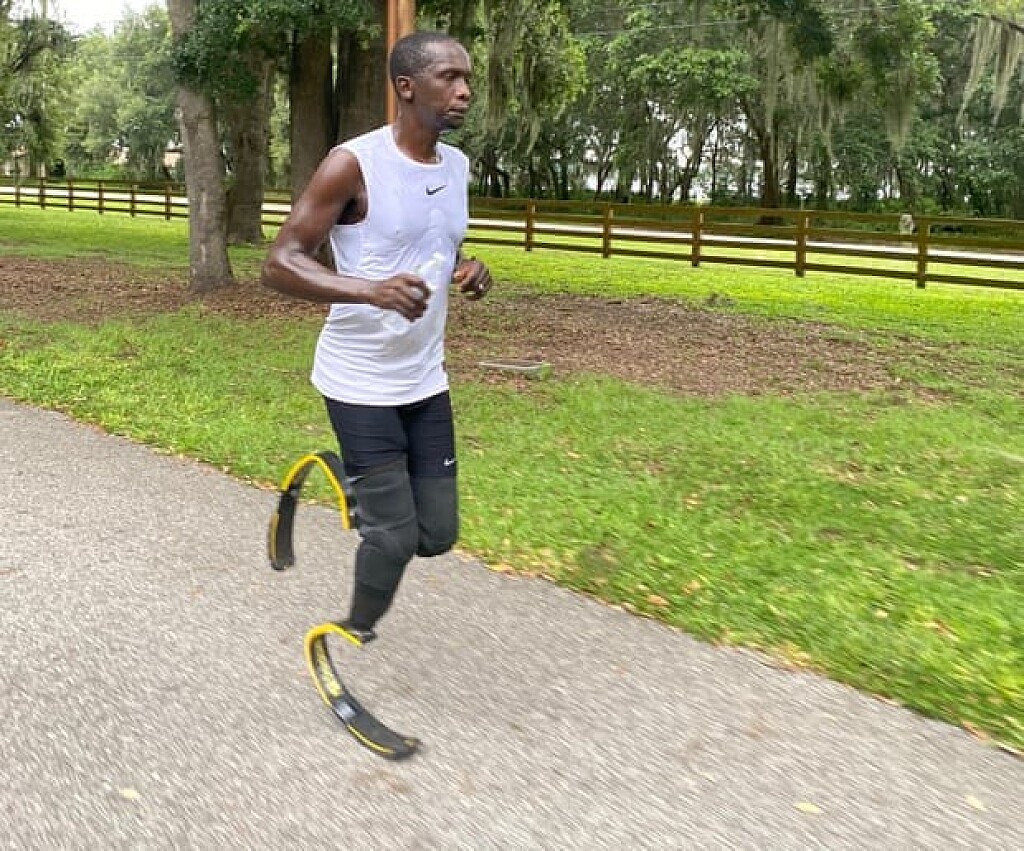Running News Daily
Running News Daily is edited by Bob Anderson. Send your news items to bob@mybestruns.com Advertising opportunities available. Train the Kenyan Way at KATA Kenya and Portugal owned and operated by Bob Anderson. Be sure to catch our movie A Long Run the movie KATA Running Camps and KATA Potato Farms - 31 now open in Kenya! https://kata.ke/
Index to Daily Posts · Sign Up For Updates · Run The World Feed
Marko Cheseto survived frostbite and double leg amputation, set to run Boston Marathon
Marko Cheseto will line up for Monday’s Boston Marathon with justified confidence: he has the fastest known time for a double-leg amputee: 2 hours 37 minutes and 23 seconds. In other words, Cheseto is capable of running six-minute miles for just over 26 miles.
The journey he took to get to this stage took him across two continents and through immense physical and emotional pain.
Cheseto’s athletic career began as a boy in Kenya, when he still had both of his feet. He was inspired by Tegla Loroupe, the first African woman to hold the world marathon record and win the New York City Marathon, who also happened to be his aunt.
Cheseto was later recruited to run at the University of Alaska, where he ran the 5k and 10k. He also convinced his coach to recruit his cousin and close friend, William Ritekwiang. But in 2011 Ritekwiang took his own life, and Cheseto blamed himself for not being able to help.

One night, deep in grief, Cheseto took some antidepressants, went for a run in the woods, and blacked out. He had overdosed. He woke up in the snow three days later, unable to feel his legs. His feet were frostbitten and developed gangrene, and his legs had to be amputated below the knee.
His world had shifted. He was fitted with walking prostheses. At first, Cheseto didn’t think running would be in his future. He had never seen anyone wearing prostheses, and he had never heard of the Paralympics.
But he started running again in 2012 on his walking prostheses. Although they were not made for running, it felt good, he says. He decided not to let the trauma of losing his cousin and his feet get the best of him. “I was trying to find a purpose in life, something that I could be proud of,” he says. “And running was that.”

In 2013, he received his first running prostheses from the Challenged Athletes Foundation (CAF). Running blades can cost $15,000 each, and they need to be highly specialized for each person.
Cheseto decided to try to qualify for the 2016 Paralympics in sprinting events, but that didn’t work out, so he shifted course to the marathon. His first was the 2018 New York Marathon, and his second was Boston in 2019.
“At first, running was for me. I wanted to do this for my own sanity,” Cheseto says. But he soon realized that other people related to what he had been through. “The only difference between me and so many people that I have talked to and have shared their pain is that mine is physical pain. I am not saying I don’t have internal struggles and pains just like everyone else … but my physical wounds helped people to feel comfortable sharing their pain.”
Cheseto also works with amputees in his job as a technician at Prosthetic & Orthotic Associates, a company that fits patients with prostheses and that he joined after receiving his own prosthetic care there for years. “That ability to be able to help someone else get a walking or running leg was just so rewarding,” he says.
But Cheseto knows there are still challenges for athletes like him. One example came in February 2020, when he was competing at the Disney Princess Half Marathon, which he had hopes of winning. The race has separate categories for athletes with disabilities and those without. Cheseto said that before the race, the race director, Jon Hughes, told him that if he finished first overall, he wouldn’t be recognized as the overall winner.
The future looks secure for Cheseto. As well as his job with prosthetics, he is sponsored by Össur and Nike. He says that their help, and the ongoing support he gets from POA and his wife, Amanda, and the rest of his family have allowed him to reach this point.
In the process of sharing his story, Cheseto has become an advocate for mental health. “I have struggles every day about what I went through and losing my feet. But then, at the same time, I’m asking myself: How have I been able to will myself this far, still having a positive attitude toward life? – most days, anyway,” he says. The answer was being able to “transition from your old self to your new self,” which many people struggle to do, he says.
by Allison Torres Burtka
Login to leave a comment
Boston Marathon
Among the nation’s oldest athletic clubs, the B.A.A. was established in 1887, and, in 1896, more than half of the U.S. Olympic Team at the first modern games was composed of B.A.A. club members. The Olympic Games provided the inspiration for the first Boston Marathon, which culminated the B.A.A. Games on April 19, 1897. John J. McDermott emerged from a...
more...




